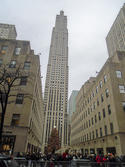Democrats want to build more transit infrastructure in order to reduce greenhouse gas emissions. The only problem is that transit emits as much or more greenhouse gases, per passenger mile, as the average car. In fact, transit is less climate friendly than driving in all but a handful of cities. read more »
Transportation
The National Academy of Wishful Thinking
- Login to post comments
Plugged Suez Canal Will Result in Californians Being Plucked at the Pumps
The current Suez Canal blockage has exposed some of Governor Newsom’s fiscal challenges that may be the driving force for the current recall efforts. Under his guidance (I did not use the word leadership), he continues to perpetuate the state’s dysfunctional energy polices and continues to do everything possible to further INCREASE the costs of energy for its 40 million residents. read more »
- Login to post comments
China Freight Volumes Hold Steady in Pandemic Year
China’s National Bureau of Statistics has just published freight transportation statistics for 2020. It tells much about China’s seemingly inexorable rise and its ties to the tangible economy. While different from most in the West, its stolidity and trajectory are fairly well-established. read more »
- Login to post comments
Weakest Link to EV Growth is the Material Supply Chain
The worldwide plans for EV domination of the vehicle population are like having the plans to build a large house without sufficient materials available to ever finish the house. read more »
- Login to post comments
The Dark Side of Japan's Bullet Trains
In 1964, the Japanese National Railways (JNR) was on a roll. The state-owned but largely unsubsidized company had just finished seven years of uninterrupted profits. Moreover, in 1964 it opened the Shinkansen (meaning new main line) between Tokyo and Osaka in time for the Summer Olympics. read more »
- Login to post comments
Fisker-Foxconn Could Get Region Deeper Into EV Era
If Fisker ends up building electric vehicles with Foxconn Technology Group in Wisconsin, as seems likely, the stunning new development could make a huge winner out of what was an economic-development disaster — and put the state back into the business of making cars for the first time in 13 years. read more »
High-Speed Rail: An Evaluation
Note: This article is adapted from the recently published Reason Foundation report Assessing the Results of the High-Speed Intercity Passenger Rail Program, by Wendell Cox read more »
Will COVID Kill Robotaxis?
One of the victims of COVID-19 may be robotaxis and with them one path towards a future of autonomous vehicles. Before the pandemic, there were two views of how driverless cars would take over the road. read more »
- Login to post comments
Work Trips in the CSAs with the Largest CBDs
This article describes the reduction in work visits, by counties within the six combined statistical areas (CSAs), also called commuting zones, that include the nation’s six largest downtown areas (central business districts, or CBDs) by employment. CSAs are combinations of adjacent metropolitan and micropolitan areas that have strong work trip commuting connections, but not as strong as within metropolitan areas (MSAs). read more »
- Login to post comments
The $25 Billion Theft
The states siphoned off 21 percent of gasoline taxes and other highway user fees to pay for mass transit and other non-highway activities in 2019, according to table SDF of the 2019 Highway Statistics, which was posted this week by the Federal Highway Administration. read more »






















